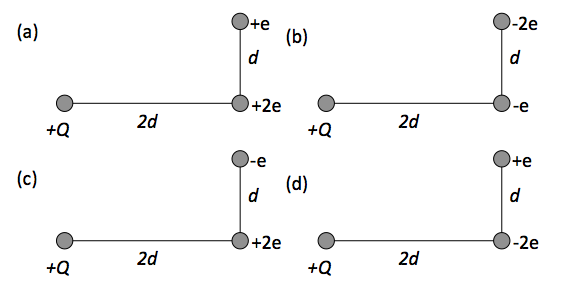Rank the arrangements
 The figures above show four different arrangements of three charged particles. Rank the arrangements according to the magnitude of net electrostatic force on the particle with charge
The figures above show four different arrangements of three charged particles. Rank the arrangements according to the magnitude of net electrostatic force on the particle with charge
This section requires Javascript.
You are seeing this because something didn't load right. We suggest you, (a) try
refreshing the page, (b) enabling javascript if it is disabled on your browser and,
finally, (c)
loading the
non-javascript version of this page
. We're sorry about the hassle.
First, let's establish that a has strongest force. It is evident that only in (a) both charges are of same polarity so their effect on Q is "superimposed" and they don't interfere. Secondly, in case of b the -2e charge is farther away then +2e was in case a so b has the second strongest field. Now, lastly, c and d are equal because of the fact that charges have opposite polarity but same position. From the formula:
F = r 2 k q 1 q 2
if the product of charges is the same. And also the position, then the force on a charge is the same. Hence, from Coulomb's law, c and d are equivalent.
Hence, ( a ) > ( b ) > ( c ) = ( d )